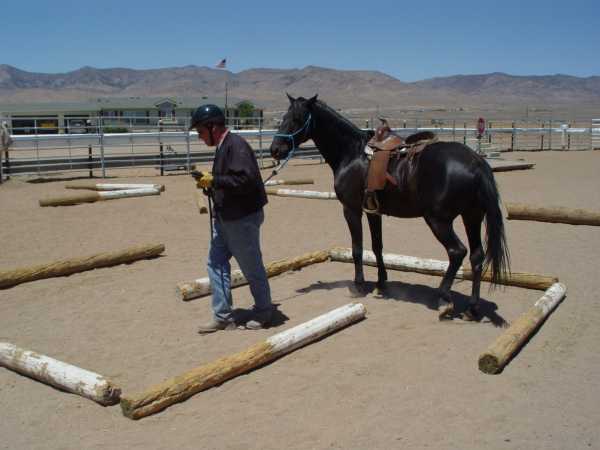Building a "Confidence Course" |
|
Some horses change colors. They progress from green, to true blue, to solid gold. Those solid gold horses are prized animals, however they didn't get that way by accident. Typically they are the result of effective training activities that both challenge the horse's mind and develop his confidence.
Here is an example of the LRTC Confidence Course in Stagecoach, NV. The obstacles are mostly made out of salvage or leftover materials from some project or another. They can be constructed safely and develop the horse's "Three Cs," Courage, Confidence and Coordination. In this feature we will describe the basic obstacles, the purpose for them and how they can most effectively be used. Also, Confidence Course obstacles are best attempted in a logical order, starting with the more basic obstacles, then moving on to the more advanced. We want to develop the horse's skill and confidence, not play "Stump the Horse." Ergo we want to be competent in each obstacle before we move to the next more advanced obstacle. Finally, we construct these obstacles to withstand the rigors of being walked on and stood on by horses. We literally Clydesdale-test these obstacles (with a rider on board) once they are constructed. |
|
The horse used in this feature is Bart, a newly adopted 7 year old BLM mustang with his adopter, Glenn Gable. Bart had been in the Confidence Course only once before just to get used to the strange objects that made up the obstacles. This case study is the first time Glenn, from Illinois, actually worked with Bart. Also this is the first time Bart had been actually worked while wearing a saddle and the first few moments in the round pen before bringing Bart out to the Confidence Course got a bit "western." In spite of all these "firsts," here are the results that can be obtained through practical use of confidence-building obstacles.
The reason we chose Bart for this presentation as opposed to a "ringer" was to demonstrate how effective a practical Confidence Course can be for getting horses focused, quiet and confident... provided we work at a pace that challenges but doesn't terrify the horse. |
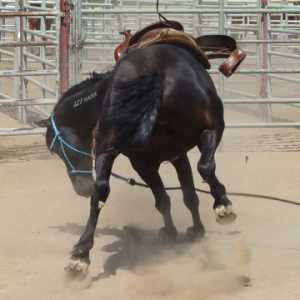
|
|
We like to think of the Confidence Course as being like a horsey amusement park. We want to challenge the horse and encourage him to think, not terrify the horse or force him through the obstacles. The horse should soon take each obstacle quietly and confidently on a light "ask."
Note: When working around any obstacles, you need to pay careful attention to your situation, your horse, any distractions and what others nearby are doing (what impact they may have on you and what impact you may have on them). Some horses may react unpredictably and you need to be prepared to guide them through any situation... or get competent assistance if you are not sure how to do so! |
Weaving the labyrinth. Working on body position and light directional aids.
|
| THE SHORT UTILITY POLE |
Stopping neatly over the short utility pole.
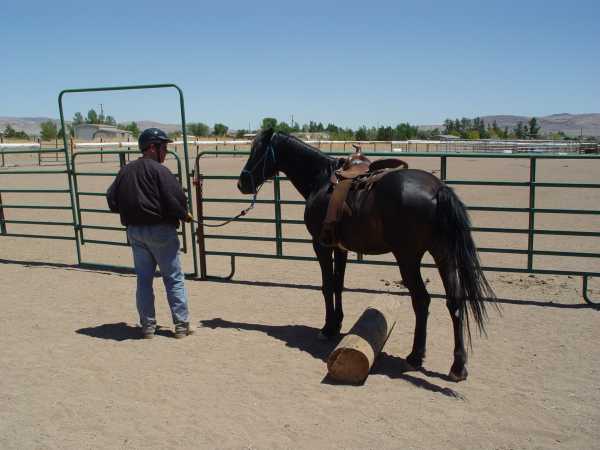
| THE NARROW LOG TRAIL |
Refining body position and safe leading.
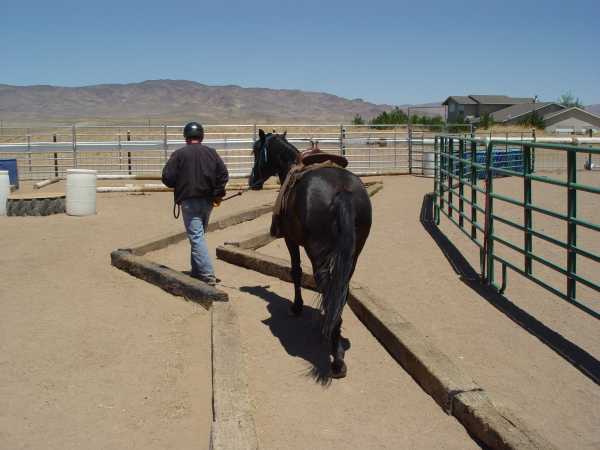
Log piles can be added to increase the challenge once the horse is leading well.
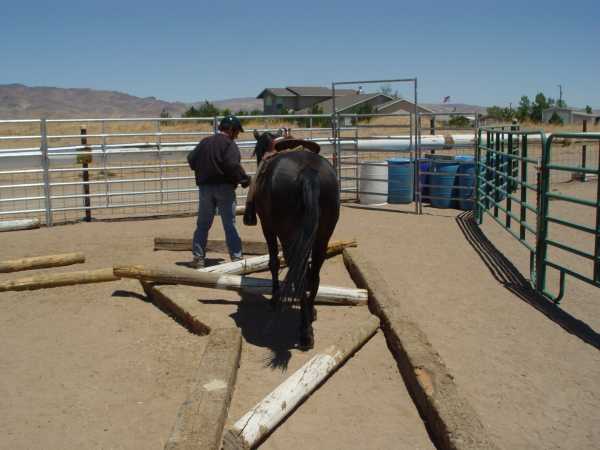
| THE NARROW BRIDGE |
Crossing the narrow bridge.
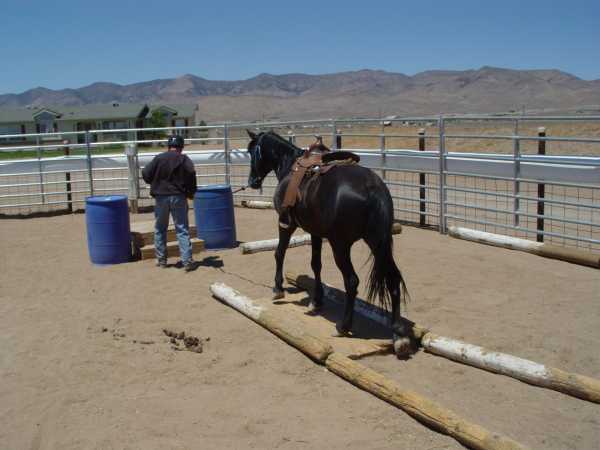
Eventually we will place the narrow bridge lengthwise atop the railroad ties on the narrow trail so the horse has to step higher without side-pole boundaries.
Continue to Part Two
Press "Back" to return to the page that brought you here
Go to Case Study Section
Return to Training Section
Return to Wild Horse Mentors
Return to KBR World of Wild Horses and Burros
Go To  KBR Horse Net
KBR Horse Net
KBR Horse Training Information, © 2007
Lamm's Kickin' Back Ranch and Willis & Sharon Lamm. All rights reserved. Duplication of any of
this material for commercial use is prohibited without express written permission.
This prohibition is not intended to extend to personal non-commercial use, including sharing
with others for safety and learning purposes, provided this copyright notice is
attached.
Email us to submit comments or
request reproduction permission.

